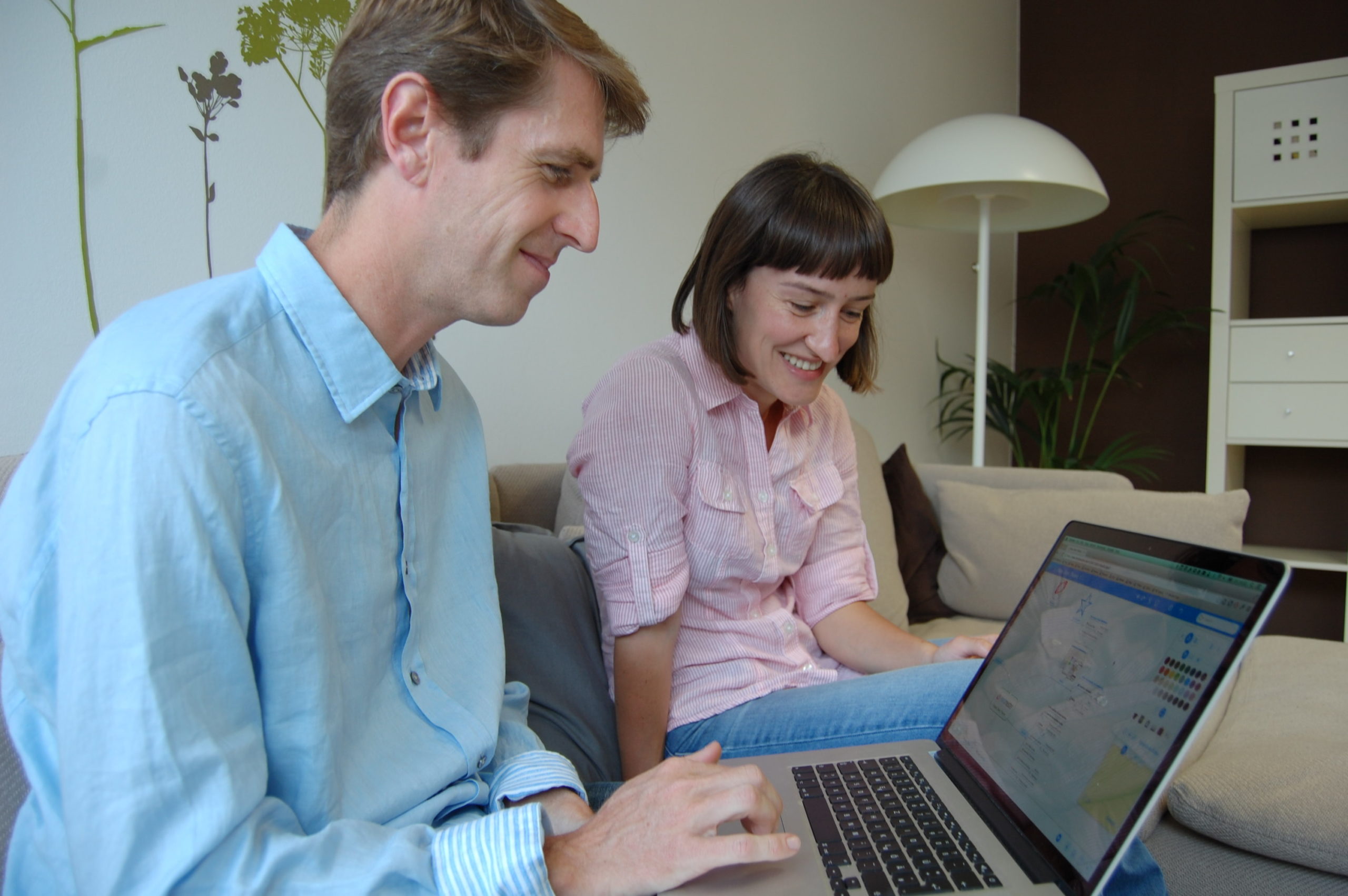It all started with an idea. Today marks the 14th anniversary of the initial beta launch of MindMeister: a moment that changed the future of collaborative online mind mapping and provided the spark for over a billion generated ideas all around the world. In this post, we look back at some of the most important events in the MindMeister journey and talk to the people who helped make the tool what it is today.

Beginnings
We were frustrated because there were no mind mapping tools that allowed us to collaborate in real time via our browsers. So we built one ourselves.
Full disclosure: we didn’t invent mind maps. While MindMeister is blossoming into its exciting teenage years, mind mapping, as a technique, is older than you might think. The method has existed since the 1970s and has been widely used in education, business and daily life ever since. While the “pure” definition of mind mapping is actually quite narrow, brainstorming diagrams and bubble mapping share many of key characteristics of mind maps.
Ready to learn more about the benefits of mind mapping for business and education? Read this informative blog article to find out why the technique is exactly what you need to get creative.
Until the turn of the millennium, most mind maps were created on paper (kids, ask your parents). Although digital mind mapping tools were slowly introduced in the early noughties, these were standalone programs that did not allow users to map together at the same time from different computers.

This all changed at 7 p.m. on February 7, 2007, when MindMeister went live in private beta. Fourteen years later, we’re the world’s leading online mind mapping tool, ready to welcome our 15 millionth user any day now. While the growth of MindMeister over time has been remarkable, it had to start somewhere. So, where did the idea for a collaborative mind mapping tool come from? Michael Hollauf, Co-founder of Meister, picks up the story.
“At the time, co-founder Till Vollmer and I used mind maps for a lot of different purposes. However, we were frustrated because there were no mind mapping tools that allowed us to collaborate in real time via our browsers. So we built one ourselves. As soon as we developed our first version, we had a feeling we were on to something.”
This hunch proved accurate. Over time, MindMeister grew steadily, from our first user to 10,000 users by the time the product was launched officially in May 2007 and onwards to our millionth user in 2011. While other mind mapping products have emerged in this time, MindMeister remains the original and, in our opinion, at least, the best.
Who makes MindMeister?
I’m in charge of almost everything related to MindMeister and accounts development, helping to shape ideas for new features, planning the technical architecture for those new features, organizing and managing our internal sprints, and ensuring my team is as happy as possible.
Naturally, such an enormous growth over such a long period of time does not occur on its own. Meister now employs dozens of developers, customer support agents, designers and more across offices in Vienna, Seattle and Munich. Their job is to develop and manage MindMeister and maintain our status as the world’s #1 online mind mapping tool.

One of the first to join the company, way back in 2007, was Laura Bârlădeanu, who now leads the development team for MindMeister. While to spend over 13 years in any organization is a remarkable achievement, to have experienced the growth of a successful company and product from the ground up lends a unique perspective to the Meister story.
“Throughout the years, my role at Meister has changed immensely. I started as a Junior Developer, moved on to become a Senior Developer, and then became a Tech Lead. Nowadays, I’m a Team Lead with a touch of Product Management. I’m in charge of almost everything related to MindMeister and accounts development, helping to shape ideas for new features, planning the technical architecture for those new features, organizing and managing our internal sprints, and ensuring my team is as happy as possible. Surprisingly, I still manage to also write code in Ruby & Javascript. It was my first, true love after all.”
Laura’s MindMeister team has two clear roles: first and foremost, to ensure that the tool continues to work smoothly and reliably for the millions of users around the world who use it every day. However, the team is also responsible for deciding on, developing and implementing new features that bring a fresh dimension to mind mapping and make the tool better-suited to use in both commercial and educational environments.
The ideation process varies from case to case — some feature suggestions come from our users, others are reactions to popular online tools we can learn from. Many more ideas are born of pure inspiration from our team: we always try to ensure that every feature we introduce brings a positive change to MindMeister.
While the principles of mind mapping have remained unchanged, many of these features have helped our users reach new heights in their creativity and collaboration. Some of the biggest hits over the years include:
- 2008 — Media attachments. Users can now enhance their mind maps with embedded multimedia attachments in map topics, including videos, images, gifs and links.
- 2012 — Presentation mode. The release of MindMeister’s presentation mode helps users create sleek, attractive slideshows to showcase their maps.
- 2014 — Commenting. MindMeister introduces a comment function, enabling users to exchange thoughts and suggestions in a logical, structured way.
- 2015 — MeisterTask Integration. Following the 2015 launch of our task management software, MeisterTask, mind mappers gained the possibility to convert their mind maps into fully-featured projects with the MindMeister-MeisterTask integration.
- 2018 — Public Map Universe. The launch of our shared space for mind maps has revolutionized mind mapping for the better. The Public Maps Universe is home to over 300,000 original creations by mappers worldwide.
Got an idea? We’re always looking for improvement suggestions. If there’s a feature you think would help your mind mapping experience, let us know in this online form.
A New Normal
When the coronavirus started shutting down offices and schools around the world, we knew we wanted to do something to help.
While the growing team at Meister now has a wide range of talents and competencies, every team member has one thing in common: we are all mind mappers at heart. It is partially for this reason that, when the coronavirus pandemic began to take hold in the early months of 2020, we saw mind mapping as the answer to many of the problems posed by the realities of our new normal.

As it happened, millions of people around the world shared our opinion too. Especially in schools and universities, many of which were dealing with the challenges of remote learning for the first time, mind mapping helped bridge the gap from home to the classroom. To ease the transition, we introduced a special campaign to give free access to educational users for the opening months of the pandemic, an effort in which Product Marketing Manager Michelle Matus was heavily involved:
“When the coronavirus started shutting down offices and schools around the world, we knew we wanted to do something to help. We set up a program to give free licenses (as many as needed) to any school or nonprofit in need of mind mapping and task management tools. We ended up getting thousands of people to request licenses and are proud that we could help people, especially teachers and students, continue to learn and work despite the global crisis. We continue to support our schools and nonprofit organizations with 50% discounts on our tools for qualifying institutions.”
Find out more about our special plans for educational institutions on our website
Continuous Evolution
MindMeister, like the maps created with it, is a continually-evolving product. One of our key goals as a company is to make MindMeister a more attractive, intuitive place to work and study for everyone.
It is for this reason that 2021 is set to be another important year for MindMeister. Our developers are currently working hard on wide-ranging updates to the tool, a first step towards realizing our bold vision for the future. An extensive development process has already seen us collect user feedback, feature requests and other wishes and combine them with our own vision for the future of digital mind mapping.
Of course, you, the user, are central to all of our grand designs — not just because the feedback provided by the people who use our software is invaluable, but because we can only be successful if we help you achieve success as well. Only with your continued support can we turn our ambitious plans for digital mind mapping into a beautiful reality together.
To the Future
Birthdays are a time for reflection: both on the eventful journey that lies in the 14 years behind us and in the exciting future that awaits. We’d like to thank every user, customer, partner and employee for their help in making the tool what it is today. Raise a glass and join us in a special birthday toast MindMeister. Here’s to the next billion ideas created!


